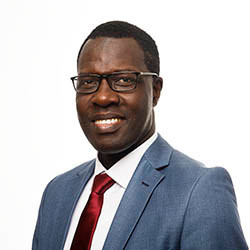Cabo Verde
The Context
Cabo Verde is an archipelago of 10 volcanic islands off the coast of West Africa totalling 4,033 km2. Of the resident population estimated at of 555, 987 in 2020, 44 per cent are under 20 years of age and 33 per cent live in rural area. Nevertheless, an estimated of 917,000 live and work abroad.
Cabo Verde has very limited natural and mineral resources and a significant structural trade deficit because it imports food and fuel. However, tourism provides a growing source of employment, economic activity and foreign exchange.
Thanks to good governance and sound macroeconomic management since independence in 1975, and assisted by remittances from migrants equivalent to 9.4 per cent of GDP and international aid, the country ranks 126 on the Human Development Index (2019).
Only 10 per cent of the country is arable land. Farming, pastoralism and forestry are highly vulnerable because of poor natural resources, an arid climate and the prevalence of traditional low intensive farming systems. The average smallholding is just 1.26 ha.
Overall 33.3 per cent of the population was rural in 2020 and around 30 per cent of the population lived below poverty line. That prompts migration to towns and tourist-oriented islands such as Sal and Boa Vista which had poverty rates of just four and eight per cent respectively.
The rural unemployment rate increased from 10.67 per cent in 2010 to 12.32 per cent in 2020.
The Strategy
In Cape Verde, IFAD loans help to improve the food security and living conditions of poor rural households.
Our country programme strategy has two main objectives:
- ensuring that natural resources are mobilized and managed in ways that are sustainable and resilient to climate change; and
- helping rural households adopt effective, sustainable production systems and seize economic opportunities.
Activities target vulnerable households and our projects promote both social and economic activities, to help ensure lasting improvements.
In addition, IFAD-supported projects help women and young people benefit from investments in production or gain easier access to job opportunities, services or markets.
Country Facts
In Cabo Verde, 44 per cent of the population is under 20 and 33.3 per cent lives in rural areas.
Nationwide, 26.6 per cent of people live in poverty, but in rural areas the proportion rises to 44.3 and is particularly high among households headed by women.
Since 1978 IFAD has supported five programmes and projects in Cape Verde totalling US$43.6 million, benefiting more than 65,000 rural households.

